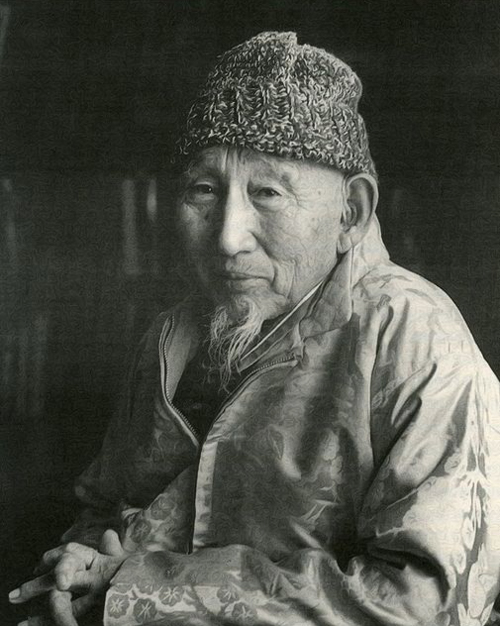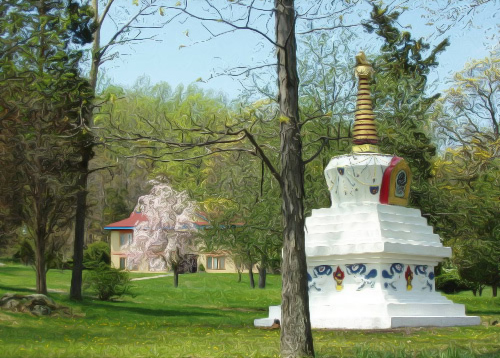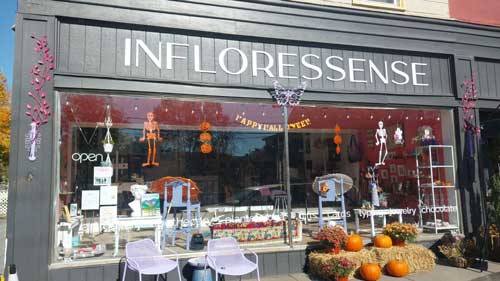In July 2008, His Holiness the 14th Dalai Lama gave an unprecedented 5 days of instruction on Tsong-kha-pa's masterpiece, The Great Treatise on the Stages of the Path to Enlightenment. For the teaching's sponsor, the Tibetan Buddhist Learning Center (TBLC), this extraordinary event was the icing on its 50th anniversary cake. And what better way to celebrate 50 years of service to Buddhism in America than with a dharma extravaganza of this magnitude?

Buddhism has seeped into American life with great flourish and has flowered into a vast array of forms. But no story of American Buddhism would be complete without recognizing the passionate energy and devotion that the Tibetan Buddhist Learning Center's founder, Geshe Wangyal, poured into Buddhism on this soil. The tranquil, park-like setting of the Center's current grounds near the Warren County borough of Washington masks a long history of Geshe Wangyal's ferocious efforts on behalf of Americans.
As a priest who immigrated to the US in order to serve a Kalmyk-Mongolian community in Howell Township, NJ, Geshe-la (as he was often called) founded TBLC (then called Lamaist Buddhist Monastery of America) in 1958 with personal funds earned through teaching at Columbia University. Through this first Tibetan Buddhist dharma center in the west, Geshe-la not only sponsored numerous Tibetan monastic scholars to come to this country; he also began to inspire many Westerners new to Buddhism. Two of his earlier students, Robert Thurman and Jeffrey Hopkins, went on to form leading graduate programs, making Geshe Wangyal the grandfather of the academic study of Tibetan Buddhism. After "retiring" from the Center in Howell, Geshe-la bought property in Washington, where TBLC now resides. Stories abound of his matchless energy, despite his advanced years, and with the help of his American students, Geshe-la cleared trees, brambles, and rocks and built buildings, transforming his personal retirement property into what it remains to this day a place for Americans to gather and study the Buddha's teachings.
Noting Geshe-la's special feeling for this country, TBLC Executive Director Joshua Cutler remarked that Geshe-la "was so grateful for the religious freedom here that he put the small American flag that he received when he became a citizen at the top of his mandala (a symbolic representation of the universe)...and would offer it to the Three Jewels every morning, imagining the US at the top of the universe." Geshe Wangyal's appreciation for the US is part of his rich personal history, which in many ways paralleled Buddhism's trials in the face of the rise to power of Communism in Europe and Asia.
Becoming a monk at the tender age of 6, Geshe-la's youth in Kalmykia in Eastern Europe was relatively stable as he pursued studies in Tibetan medicine and Buddhist philosophy. This semblance of security, however, changed with the Bolshevik Revolution of 1918 and the Russian Civil War. "The subsequent purges of religion and enforced atheism," says Cutler, "kept him on the move for the next 35 years until he finally arrived in this country." Never again to see his homeland of Kalmykia, Geshe-la traveled through Russia to study at Drepung Monastery in Lhasa, Tibet. He spent the next 20 years traveling throughout Asia, suring which he learned English and edited the Tibetan Buddhist canon in Beijing, served as abbot of a monastery in Mongolia, won debates in the sacred residence of Manjushri in China, translated for English diplomatic envoy Sir Charles Bell in Manchuria, and served as a language instructor for a French envoy in Vietnam. Although he returned to Southern Tibet and hoped to create a retreat house there, the Chinese armies arrived on the border in the 1950s. No stranger to the effects of Communism, Geshe-la quickly fled to Kalimpong, India, from where he determined to immigrate to America as a refugee.

As he sailed into New York harbor on La Liberte in 1955, Geshe Wangyal brought with him a host of experiences in adapting in the face of life's adversities and uncertainties and an unswerving commitment to Buddha's teachings. "It is as if he embodied the radical changes that Buddhism was going through like a tree sucking up nourishment from the soil," says Cutler. "And this tree was then transplanted from one continent to another and is slowly taking root in new soil. Isn't it amazing what one person can do with his life?"
Joshua Cutler has a deep admiration for this text. "Tsong-kha-pa's Great Treatise is an apt choice for an historic event marking 50 years of Tibetan Buddhism in America. Tsong-kha-pa had a powerful effect on the course of Tibetan history. You can easily see why when you read the Great Treatise, his masterpiece. The clarity, insightfulness, and scholarship are astounding." Cutler adds, "This is the Buddha's profound teachings from A to Z. The Great Treatise has something for everyone, whether novice or adept."
In 1991, Cutler organized the Lamrim Chenmo Translation Committee, a group of twelve translators who would work on seventeen different sections of the text under the auspices of the Tibetan Buddhist Learning Center. Besides translating one of the sections, Joshua's job was to edit these different sections into one voice, keeping faithful to a list of translation equivalents that the translators agreed upon in three translation conferences. He was assisted in this capacity by the brilliant Guy Newland of the University of Central Michigan, who also took full responsibility for editing the 249-paged insight (lhag mthong) section, as well as translating one section of it. Joshua wanted the translation to be as authoritative as possible, so TBLC sponsored the Venerable Denma Lochš Rimpoche and Loling Geshe Yeshe Tapkay to stay at the Center's facilities over a number of summers and give a commentary on the text. These two teachers are highly revered in the Tibetan community and are expert in the meaning of Tsong-kha-pa's works. They gave a commentary on the first 564 pages; the remaining pages constituted the insight section, and the translation of this was checked over by His Holiness the Dalai Lama's translator Dr. Thupten Jinpa, who also closely reviewed some difficult sections specified by Guy Newland.
By the end of 1994 most of the sections of the translations were in Joshua's hands, so he began the painstaking work of carefully checking the translations against the 250 hours of Lochš Rimpoche and Geshe Yeshe Tapkay's commentary that he had taped, and then editing each translator's contribution. Now that his twelve-year immersion in the text is finished, Cutler can reflect on the whole project. "It is interesting to consider how I could maintain my enthusiasm in order to complete this immense undertaking. My motivation seemed to be an assemblage of various concernsÐthe general need for a complete translation, the need at TBLC for a textbook, the personal challenge and need to know more, etc. But once I look more closely, I can trace a growing admiration for the author as the primary reason that I was able to devote such a large part of my life to this work."
Contact: Joshua W.C. Cutler,
Executive Director
Tibetan Buddhist Learning Center
93 Angen Rd Washington, New Jersey 07882-4318
Phone: 908-689-6080
Website
Former/Other Names: Lamaist Buddhist Monastery of America, Labsum Shedrub
Ling
Visitors Welcome on Sundays during public programs
(TBLC is run only on donations, students are asked to pay a fee for
room and board and make a donation for classes. All work at the Center
is done on a
voluntary basis.)
Dr. Amy Miller is a trustee of the Tibetan Buddhist Learning Center
Local roots!
Millbrook Village, part of the Delaware Water Gap National Recreation Area, is a re-created community of the 1800s where aspects of pioneer life are exhibited and occasionally demonstrated by skilled and dedicated docents throughout the village
The 8,461 acre park includes the 2500-acre Deer Lake Park, Waterloo Village, mountain bike and horseback trails.
The Centenary Stage Company produces professional equity theatre and also a wide variety of top-flight musical and dance events throughout the year.

A fine art gallery like no other! Unique, handmade gifts and cards as well as yoga, meditation, and continued learning lectures. Come in Saturdays for all-day open mic and Sundays to try unique nootropic chocolate or mushroom coffee. Browse the $5 books in the Believe Book Nook while you nibble and sip.